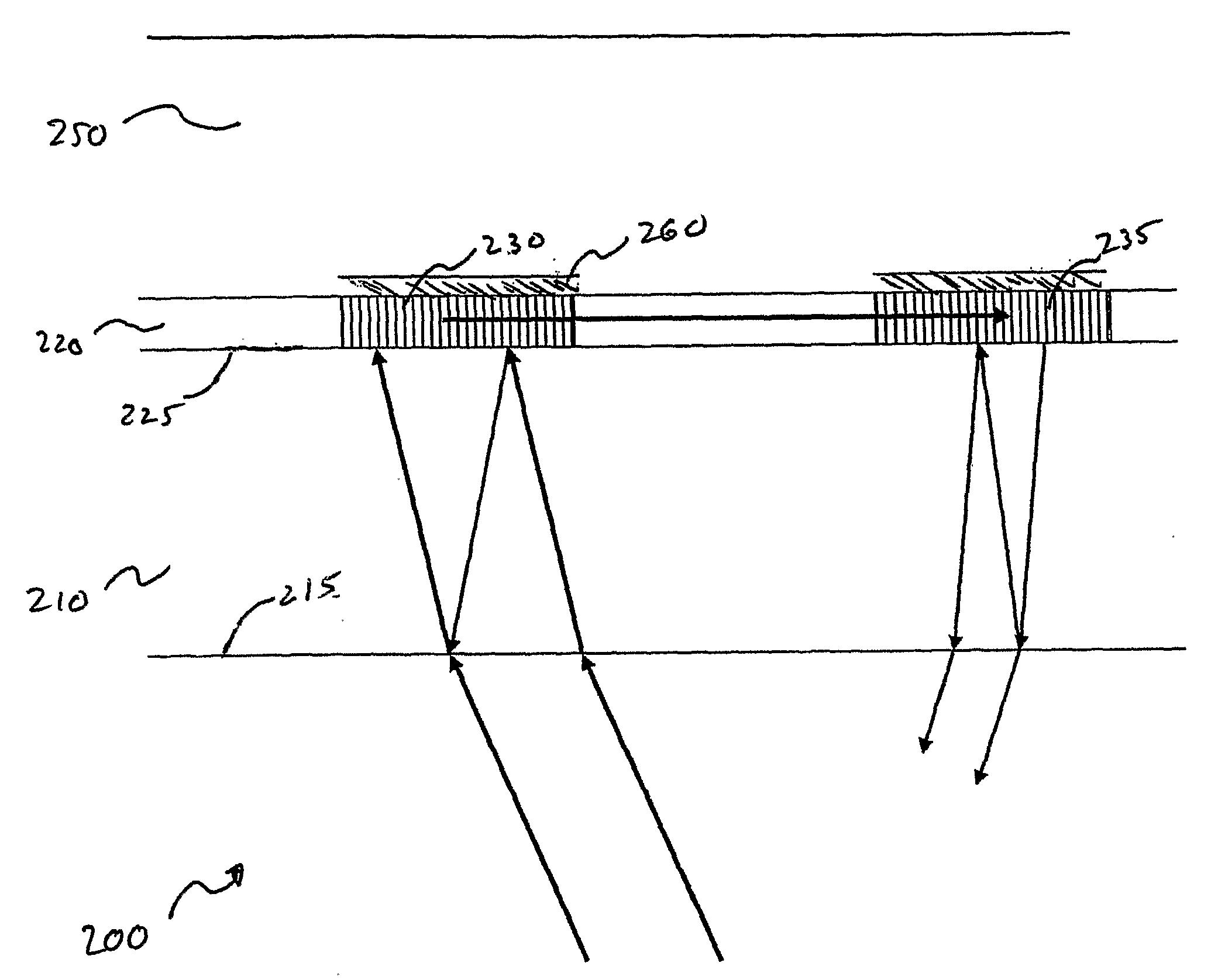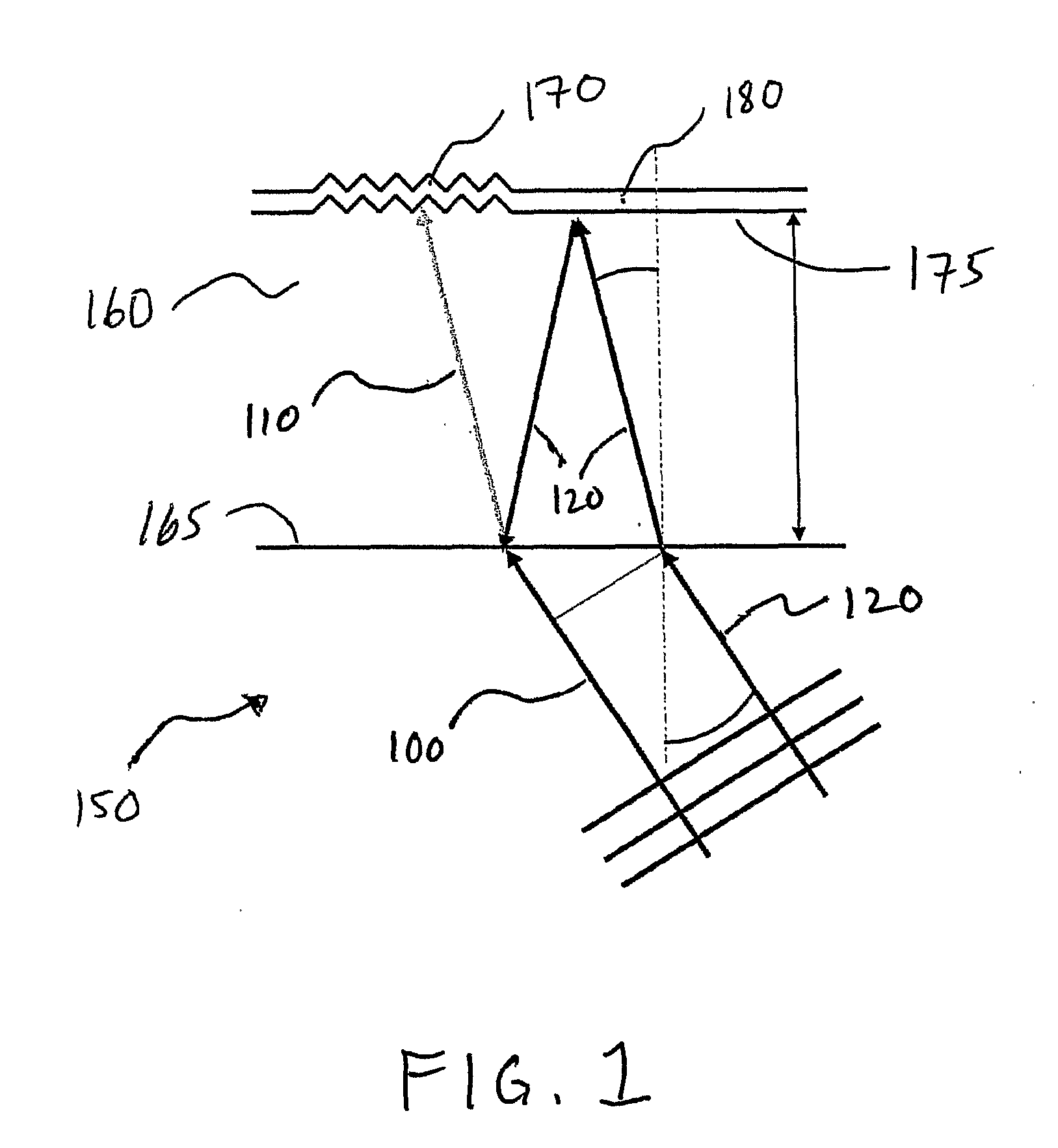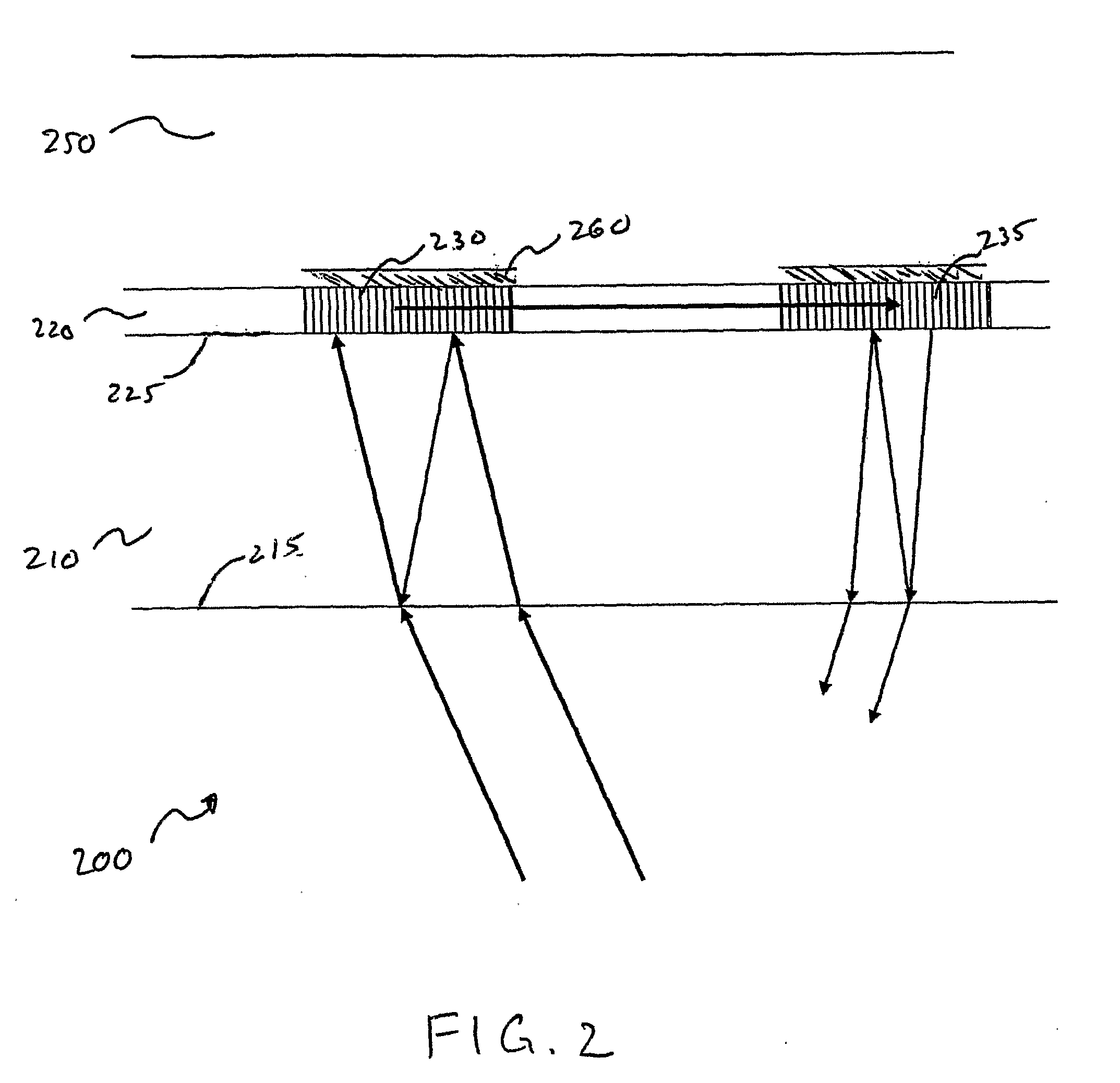Integrated Optical Waveguide Sensors With Reduced Signal Modulation
a technology of optical waveguide and signal modulation, applied in the field of integrated optical sensors for chemical and biochemical analysis, can solve the problems of reducing the sensitivity or limit of the measured signal, observing the “wobble” in the measured signal, and reducing both the sensitivity and accuracy of the measured signal. , to achieve the effect of reducing the amount of incident light entering, reducing the amount of light not coupled, and reducing the amount of superimposed incident light coupled
- Summary
- Abstract
- Description
- Claims
- Application Information
AI Technical Summary
Benefits of technology
Problems solved by technology
Method used
Image
Examples
Embodiment Construction
[0037]The apparatus and methods of the present invention provide improved integrated optical waveguide sensor modules that are configured to reduce the undesired phenomenon of internal parasitic interference. Such improved apparatus and methods therefore result in optical waveguide modules and associated apparatus with improved sensitivity and accuracy. In another aspect of the present invention, apparatus and methods are provided that decrease the detection limits of an integrated optical waveguide sensor module, thereby also increasing its sensitivity. Moreover, embodiments of the present invention may be used individually as well as in suitable combinations, thereby providing even greater improvements.
[0038]Parasitic interference results from the superposition of separated light beams that originate from a common source beam. Separated light beams may arise during the transmission of the original source beam through a refractive medium having internally reflective interfaces. Alt...
PUM
| Property | Measurement | Unit |
|---|---|---|
| optically transparent | aaaaa | aaaaa |
| internal reflection | aaaaa | aaaaa |
| angle of incidence | aaaaa | aaaaa |
Abstract
Description
Claims
Application Information
 Login to View More
Login to View More - R&D
- Intellectual Property
- Life Sciences
- Materials
- Tech Scout
- Unparalleled Data Quality
- Higher Quality Content
- 60% Fewer Hallucinations
Browse by: Latest US Patents, China's latest patents, Technical Efficacy Thesaurus, Application Domain, Technology Topic, Popular Technical Reports.
© 2025 PatSnap. All rights reserved.Legal|Privacy policy|Modern Slavery Act Transparency Statement|Sitemap|About US| Contact US: help@patsnap.com



